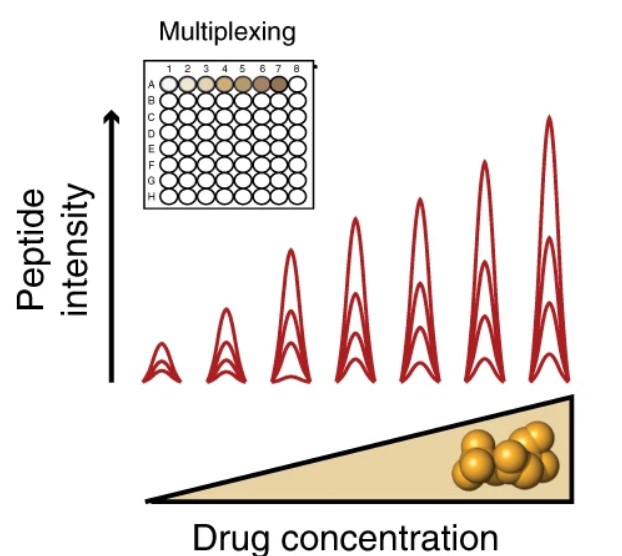Allostery and protein-metabolite interactions
Small molecule metabolites are abundant, relatively under-studied, and important players in many biological processes. Protein-small molecule interactions are implicated, among others, in metabolism, signaling and allosteric regulation of diverse proteins and protein complexes. The LiP-MS approach pioneered by our laboratory (see section on Structural Systems Biology for details), can detect protein structural alterations that result from small molecule binding, even within the complex cellular context. We have shown that LiP-MS detects the consequences of binding at both catalytic and allosteric sites and that it can be used to map protein targets of a given small molecule and binding sites on a proteome-wide scale. Using this approach we recently generated a map of protein-metabolite interactions that includes more than 1,400 novel interactions. We use this chemoproteomic approach to systematically map the structural consequences of protein-small molecule interactions, including drug interactions, in cells from bacteria to human. Our studies have identified new instances of enzyme-substrate and allosteric relationships and metabolite-induced remodeling of protein complexes. They also shed light on the prevalence and mechanisms of enzyme promiscuity. We are currently extending this approach to drug target deconvolution studies.
Selected Publications

M. Pepelnjak, B. Velten, N. Näpflin, T. von Rosen, U.C. Palmiero, J.H. Ko, H.D. Maynard, P. Arosio, E. Weber-Ban, N. de Souza, W. Huber, P. Picotti. external page In situ analysis of osmolyte mechanisms of proteome thermal stabilization. (2024) Nat. Chem. Biol., Feb 29. 2024

I. Piazza, K. Kochanowski, V. Cappelletti, T. Fuhrer, E. Noor, U. Sauer, P. Picotti. external page A Map of Protein-Metabolite Interactions Reveals Principles of Chemical Communication. (2018) Cell, 172 (1-2), 358-372. e23.

I. Piazza, N. Beaton, R. Bruderer, T. Knobloch, C. Barbisan, L. Chandat, A. Sudau, I. Siepe, O. Rinner, N. de Souza, P. Picotti, L. Reiter. external page A machine learning-based chemoproteomic approach to identify drug targets and binding sites in complex proteomes. (2020) Nat. Commun., 11 (1), 1-13.